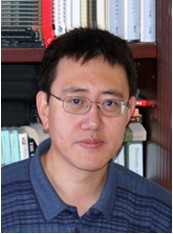
Miao Maosheng (苗茂生教授)
Materials Research Laboratory,
University of California Santa Barbara
Beijing Computational Science Research Center
Abstract: The recent discovery of topological insulators (TI) and the robust transport properties of their massless edge states have sparked the search of semiconductor systems with inverted bands. Despite the rapidly increasing number of TI families, an essential goal to achieve TI state in commonly used semiconductor systems still remains, mainly because those semiconductors normally possess sizable energy gap and insignificant spin-orbit interaction (SOI). Here, we propose that the intrinsic polarization of materials can be utilized to reduce the energy gap and enhance the SOI simultaneously, which can drive the system to TI state. By combining the advanced electronic structure calculations and the effective low-energy k·p Hamiltonian method, we demonstrate that InN layers can be converted into a TI state while inserted in GaN matrix. This approach may pave a way toward integrating controllable TI in conventional semiconductor devices.
The appropriateness of including Hg among the transition metals has been debated for long time. Although HgF4 molecules have been synthesized in neon and argon matrix, they show strong instability against the dissociation, throwing into question the classification of Hg as a transition metal. In this letter, we propose that high pressures provide a controllable method for preparing unusual oxidation states of matter. Using an advanced structure search method based on first-principles electronic structure calculations; we predict that under high pressures, Hg can transfer the electrons in its outmost d shell to F atoms, thereby acting as a transition metal. Oxidation of Hg to the +4 state yielded thermodynamically stable molecular crystals consisting of HgF4 planar molecules, a typical geometry for d8 metal centers.
DateTime: July 26, 2012 (Thursday), 11:00 – 11:40
Location: 606 Conference Room


